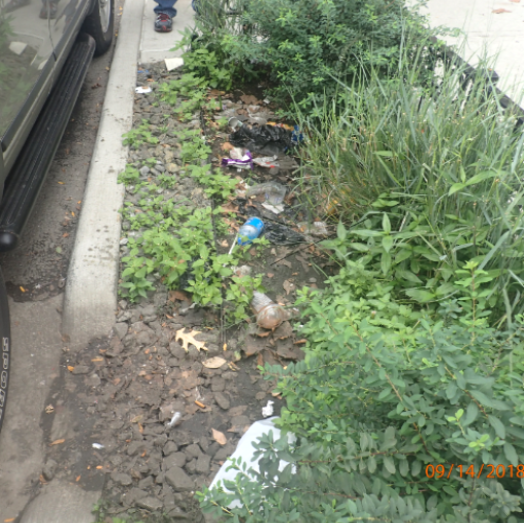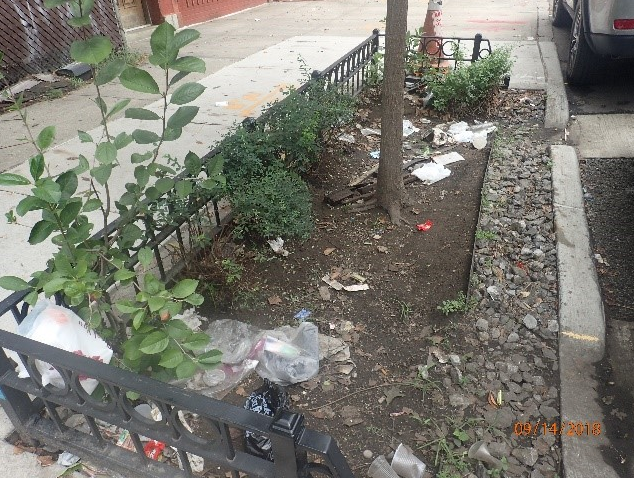Comptroller Stringer Audit Finds Mismanagement and Shoddy Oversight of City-Owned Rain Gardens by the Department of Environmental Protection

City built more than 2,511 rain gardens for an estimated $100 million, to control stormwater and keep untreated sewage out of the City’s waterways
Audit found multiple maintenance deficiencies that could impair functioning at 67 of 102 sampled rain gardens and degrade the appearance of 53
Comptroller Stringer recommended DEP strengthen maintenance to keep the City’s waterways clean and beautify—rather than mar—the City’s neighborhoods
(New York, NY) — Today, New York City Comptroller Scott M. Stringer released a new audit of the New York City Department of Environmental Protection’s (DEP’s) rain gardens, which found visible maintenance deficiencies at 95 of the 102 rain gardens that auditors visited in Brooklyn, Queens, and the Bronx. The audit found:
- 67 (66 percent) of 102 sampled rain gardens exhibited two or more conditions that DEP’s own maintenance manual states can impede their proper functioning, including:
- sediment buildup in the rain gardens’ gravel strips, planting areas, and curb cuts;
- compacted and depleted soil that needed to be raked and replenished;
- weeds and overgrown plants that needed pruning; and
- missing plants and trees.
- 53 (52 percent) of the sampled rain gardens were marred by two or more unsightly conditions, such as trash, weeds, overgrown grass, and missing plants.
- 29 percent had four or more deficient conditions.
- Only 7 of the 102 sampled rain gardens had no visible deficiencies.
“Seven years after our city was devastated by Superstorm Sandy, we cannot afford to shirk our responsibility to improve its resiliency,” said New York City Comptroller Scott M. Stringer. “We must use every tool we have to lessen the devastating impacts of future storms. The City built thousands of rain gardens to help control stormwater and protect our waterways, streets, homes, and small businesses, but our audit uncovered a dysfunctional maintenance program that wastes taxpayer dollars and puts critical infrastructure at risk. DEP must step up to the plate and properly maintain these vital resources. We cannot win the battle to protect New Yorkers against the next superstorm and keep our waterways clean if we allow these vital resources to fall into disrepair due to neglect.”
As of April 2018, DEP was responsible to manage 2,511 rain gardens that the City had built at an estimated construction cost of just over $100 million. Rain gardens contain plants and engineered soil that are specially designed to absorb and infiltrate large amounts of stormwater and reduce the volume of runoff that enters the City’s combined sewer system where it mixes with wastewater from homes and businesses. Properly maintained rain gardens help control stormwater to minimize sewer overflows from heavy storms that could otherwise pollute the City’s waterbodies—such as Alley Creek, the Bronx River, Coney Island Creek, Flushing Bay, Flushing Creek, Gowanus Canal, Hutchinson River, Newtown Creek, Jamaica Bay & Tributaries, Westchester Creek, and the East River & Open Waters. According to DEP, well-maintained rain gardens also improve streetscapes and street drainage, help purify the air, and reduce temperatures during hot weather.
The audit examined DEP’s maintenance of 102 of the 805 rain gardens that DEP was supposed to fully maintain as of April 2018, following their construction-guaranty periods of up to two years. In Fiscal Years 2018 and 2019 DEP spent more than $5 million per year to maintain approximately 805 of the 2,511 rain gardens then under its jurisdiction. DEP currently manages more than 4,000 rain gardens that cost the City an estimated $161 million to build.
To keep the City’s rain gardens functioning well and in good appearance, DEP developed a detailed Rain Garden Maintenance Manual. It prescribes nine separate categories of maintenance tasks to be performed once or twice per week at each rain garden and notes, “Rain gardens work best when they are well maintained.” DEP records its maintenance inspections and work in logs that the auditors examined, in conjunction with their own inspections of the sampled rain gardens.
In sum, the audit found that DEP has not maintained its rain gardens in accordance with its manual.
In addition to the deficiencies described previously, Comptroller Stringer’s audit of DEP’s rain gardens found that DEP’s maintenance logs for many sampled rain gardens were incomplete, inaccurate, and ineffective as a management tool for monitoring their condition and maintenance needs. For example:
- Auditors found trash, litter, leaves, weeds, and a sinking curb at one rain garden at Mother Gaston Blvd & Hull Street, Brooklyn (photo below). DEP’s maintenance logs showed that no maintenance tasks had been performed at this rain garden in the three-week period preceding, coinciding with, and following the auditors’ inspection. A DEP official informed the auditors that, even though the DEP manual calls for weekly or twice-weekly maintenance at every rain garden, in practice DEP officials schedule their maintenance work based on priorities and available resources. DEP provided no records to document or explain the absence of maintenance for 3 consecutive weeks at this rain garden—or at 9 others in Brooklyn with similar conditions in varying degrees of severity (Audit Report, pages 18 and 21-24).

- Auditors found another Brooklyn rain garden with four deficient conditions—litter, sparse plant coverage, a gravel strip in need of cleaning, and a soil bed that needed replenishment and raking. No work was recorded in DEP’s maintenance logs for the three-week period preceding, coinciding with, and following the auditors’ inspection. A photo of the rain garden, located at 243 Hull Street in Brooklyn, at the time of the auditors’ inspection follows (see Audit Report, page 22).

- Auditors found sinking or damaged tree guards and curbs at 15 locations in Brooklyn, Queens, and in the Bronx. None of DEP’s maintenance logs or other relevant records mentioned any of those conditions as required by DEP’s procedures.
- DEP does not photograph its rain gardens as part of its regular maintenance procedure, including to note repair issues that cannot be immediately addressed, despite the DEP manual’s advice, “Typically it is best to document issues using photos and notes.”
Comptroller Stringer’s audit included a series of recommendations to DEP to improve maintenance of the agency’s rain gardens to mitigate the effects of future storms and beautify the City’s neighbohoods. The recommendations included:
- Perform and review required inspections and maintenance tasks at every rain garden to maintain their proper appearance and functioning.
- Establish performance targets for agency supervisors to increase the number of field visits to review staff reports on the condition and needs of their rain gardens.
- Use photographs to document “before and after” conditions observed each time a rain garden receives maintenance, routine or otherwise, by a DEP maintenance team.
- Document the existence of each maintenance issue every time the rain garden is visited, until the issue is resolved, so that a record of how long the condition has existed and the time taken to correct each of the various issues can be tracked.
- Fix all damaged or sinking tree guard rails and curbs surrounding rain gardens identified in the audit.
- Engage with local communities to assist in maintaining and improving the condition of rain gardens as neighborhood resources to prevent flooding and enhance quality of life.
- Install rain garden ID tags with appropriate control numbers to effectively address maintenance needs reported by the public, effectively communicate with contractors, and for an additional efficiency measure when DEP deploys a planned technology solution.
To read Comptroller Stringer’s audit of DEP’s rain gardens, click here.
###